How to Create ERC20 Token in 4 Steps on Ethereum 2025?
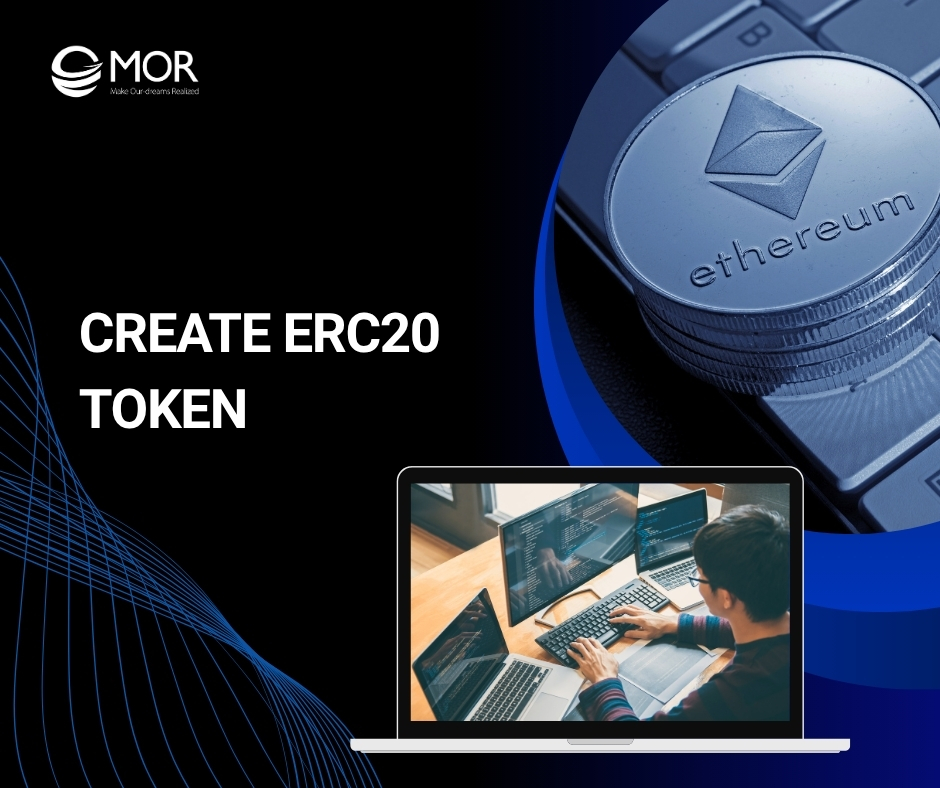
Looking to create ERC20 token but unsure where to start? Many businesses and developers struggle with the technical setup, from writing Solidity contracts to deploying them on Ethereum. This MOR Software’s guide will walk you through the exact steps of creating an ERC20 token, making the process clear, practical, and achievable.
What Is An ERC20 Token?
An ERC20 token is a digital asset built using a smart contract on the Ethereum blockchain that follows the ERC-20 technical standard. This framework defines a consistent set of rules and core functions every token must support. Being "fungible" means that each token has the same value and can be traded or exchanged for another of the same type, just like one dollar bill is equal to another dollar bill.
ERC20 tokens are everywhere. In fact, Etherscan currently records around 1.73 million different ERC20 token contracts active on the Ethereum blockchain.
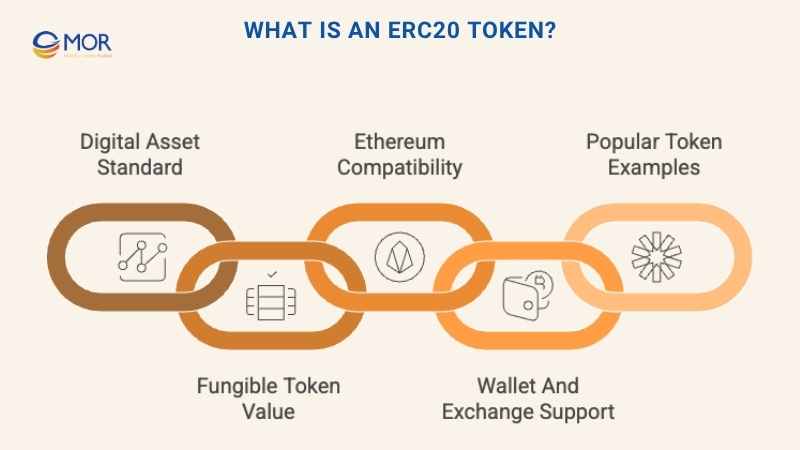
This shared structure makes integration much simpler. Any project can create ERC20 token and have it instantly compatible with most Ethereum wallets, crypto exchanges, and decentralized applications. For example, MetaMask alone reports 30M+ monthly active users, a proxy for the wallet reach projects can tap on day one.
That universality removes the need for one-off adjustments whenever a new token is launched. Well-known examples of ERC20 tokens include stablecoins like USDC and DAI, as well as utility tokens like LINK from Chainlink. Reflecting that traction, stablecoins as a category recently surpassed $300 billion in total market capitalization.
What Is The ERC-20 Token Standard?
The ERC-20 token standard defines the core properties of fungible tokens on the Ethereum blockchain. All compliant tokens share the same rules, meaning one token is always equal in value to another, and none carry special rights or exceptions. This uniformity allows developers to create ERC20 token systems that are predictable, interchangeable, and fully supported across the Ethereum ecosystem.
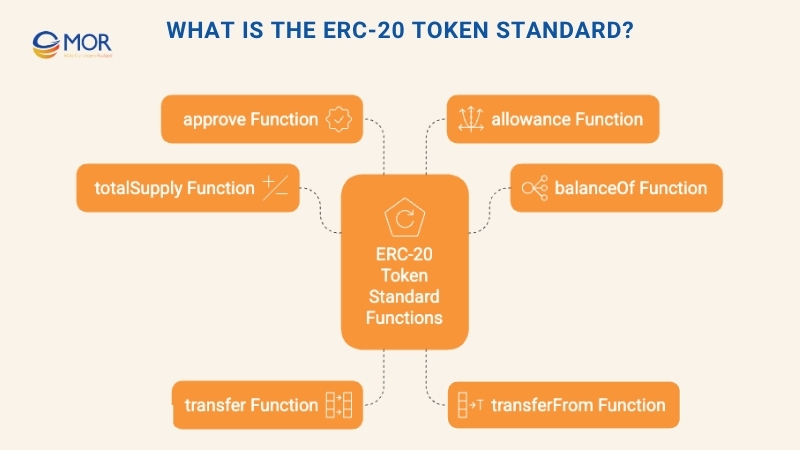
To follow the ERC-20 token standard, a smart contract automation must include specific functions and events:
- totalSupply – sets the maximum supply of tokens and prevents minting beyond that limit.
- balanceOf – shows the exact number of tokens held by a given wallet address.
- transfer – enables tokens to move from the supply into the account of a chosen user.
- transferFrom – allows tokens to be sent between users.
- approve – confirms whether a contract can allocate a certain number of tokens on behalf of a user.
- allowance – verifies that a wallet has enough balance to complete a transfer.
Following these requirements, ERC-20 tokens stay fungible and widely usable. In contrast, other Ethereum standards define different asset types, such as ERC-721 for NFTs or ERC-1155 for semi-fungible assets.
How ERC-20 Tokens Work?
An ERC20 token is powered by an Ethereum smart contract. A smart contract is a self-executing program stored on the blockchain that defines how the token operates. It controls ownership, balances, transfers, and all of the token’s rules. Smart contracts are written in Solidity, a programming language similar to JavaScript but designed specifically for blockchain platforms. Solidity allows developers to read, write, and execute code directly on Ethereum.
The ERC-20 standard is essentially an API specification for how tokens must be designed to stay compatible across the ecosystem. Without this shared structure, every project could create tokens differently, making them impossible to support across wallets and exchanges. By following this standard, developers who create ERC20 token can guarantee that their assets are recognized and usable across a wide range of platforms.
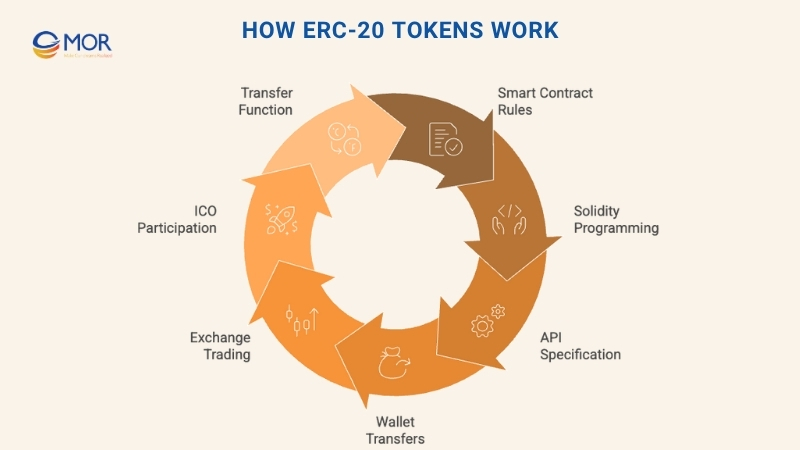
With ERC-20 compliance, tokens support common use cases such as:
- Sending tokens between wallet addresses.
- Trading on cryptocurrency exchanges.
- Participating in token sales or ICOs.
The standard defines the required functions and events a token must implement. One of the most important is the transfer function, which allows tokens to move securely from one account to another. Below is a simple implementation of that function in Solidity:
contract ERC20Token {
// ...
function transfer(address _to, uint256 _value) public returns (bool success) {
require(balanceOf[msg.sender] >= _value);
balanceOf[msg.sender] -= _value;
balanceOf[_to] += _value;
Transfer(msg.sender, _to, _value);
return true;
}
// ...
}
This snippet shows how ERC-20 rules are enforced: the function exists, accepts proper arguments, checks balances, updates accounts, emits a Transfer event, and returns a value confirming success. Using this structure, anyone can create a ERC20 token that works seamlessly across the Ethereum network and its many applications.
>>> If you’re set on scaling your Web3 project or protecting your DeFi platform, you know why choosing to hire smart contract developers is mission-critical
How To Create ERC20 Token?
In this section, we’ll walk through four clear steps on how to create an ERC20 token and deploy it on the Goerli test network. With the right setup, you can act as your own Ethereum token creator, using tools like MetaMask, Solidity, Hardhat, and Alchemy. By the end, you’ll have a functioning token that meets the ERC-20 standard and can interact with wallets and dApps across the ERC20 network.
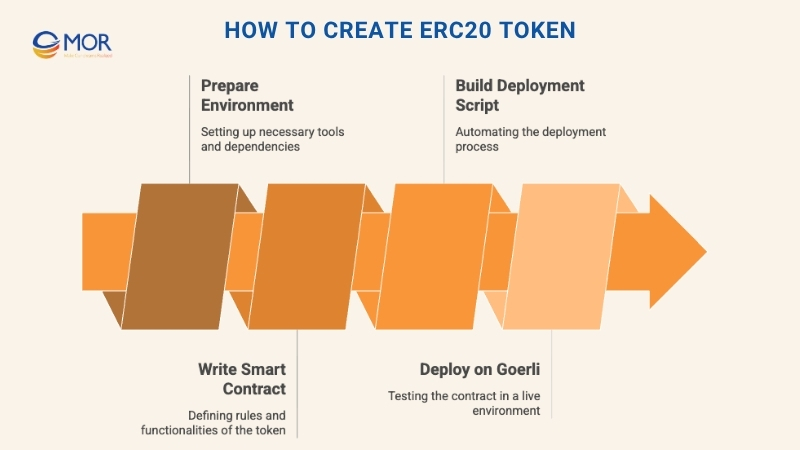
Step 1 – Preparing The Development Environment To Create ERC20 Token
To begin, sign up for an Alchemy account and install MetaMask, Hardhat, and Solidity. These tools form the foundation for creating an ERC20 token. If you need help setting up Hardhat, the ChainShot tutorial is a solid reference.
Once your tools are ready, open your terminal and create a project folder with the following commands:
mk my-token
cd my-token
npm init
If you don’t already have Node.js and NPM installed, follow this guide to get them running.
Inside the root of the my-token project, add two directories: one for your contracts and one for deployment scripts. Run:
mkdir contracts
mkdir scripts
This setup ensures that your smart contract files and deployment scripts are well-organized before you start coding your ERC-20 token.
Step 2 – Writing The Smart Contract For ERC20 Token
Now it’s time to write the Solidity contract that defines your ERC20 token. Solidity is the fastest programming languages used for Ethereum, and it resembles JavaScript or C++, but with rules tailored to blockchain.
- Open your my-token project in your preferred editor.
- Go into the /contracts folder.
- Create a new file with the .sol extension. The file name should match the name of your token. For instance, if you want your token to be called Web3Token, then the file should be named Web3Token.sol.
Inside that file, paste the following code, which uses the OpenZeppelin ERC20 implementation:
//SPDX-License-Identifier: Unlicense
pragma solidity ^0.8.0;
import "@openzeppelin/contracts/token/ERC20/ERC20.sol"; // OpenZeppelin provides the ERC20 standard implementation
contract GoofyGoober is ERC20 {
uint constant _initial_supply = 100 * (10**18); // initial supply of tokens with 18 decimal places
// ERC20 constructor accepts the token name and symbol
constructor() ERC20("GoofyGoober", "GG") public {
_mint(msg.sender, _initial_supply);
}
}
In this example, the token name is “GoofyGoober” and the symbol is “GG.” You can replace these with any name and symbol you prefer. Also, the initial supply is set to 100, but you’re free to adjust this number to define how many tokens you want at the start. Just make sure you leave (10**18) untouched, since it ensures the supply has 18 decimal places, which is standard for ERC20 tokens.
With this step, you’ve laid the foundation for creating a ERC20 token that can be deployed and recognized across the Ethereum network.
Step 3 – Building A Deployment Script To Create ERC20 Token
With your smart contract ready, the next step is to write a script that deploys it to the public blockchain. Hardhat uses JavaScript for deployment scripts, and this file will handle compiling, deploying, and logging the address of your new token.
- Go to the /scripts folder in your project.
- Create a new file called deploy.js.
- Open deploy.js in your editor.
- Paste the code snippet below:
async function main() {
const [deployer] = await ethers.getSigners();
console.log("Deploying contracts with account:", deployer.address);
const weiAmount = (await deployer.getBalance()).toString();
console.log("Account balance:", ethers.utils.formatEther(weiAmount));
// Replace "GoofyGoober" with the name of your ERC20 contract
const Token = await ethers.getContractFactory("GoofyGoober");
const token = await Token.deploy();
console.log("Token deployed at address:", token.address);
}
main()
.then(() => process.exit(0))
.catch((error) => {
console.error(error);
process.exit(1);
});
Make sure the name you use inside getContractFactory matches the contract name you wrote earlier in your Solidity file. Once configured, this deployment script allows you to create ERC20 token on the blockchain and view its unique address once deployed.
Step 4 – Deploying ERC20 Token On Goerli Testnet
The final step is deploying your ERC20 token smart contract. From your project’s root directory, run the following command in your terminal:
npx hardhat run scripts/deploy.js --network goerli
This command compiles your contract and deploys it on the Goerli test network. Once complete, the console will display details such as your account address, current balance, and the token’s contract address.
To verify, visit Goerli Etherscan and enter the token address shown in your output. You’ll be able to see your deployed contract live on the ERC20 network.
At this stage, you’ve successfully learned how to create ERC20 token and launch it on Goerli using OpenZeppelin’s implementation. Share your new token, test transfers with friends, and start exploring how a real token economy can take shape.
Why You Should Create Your Own ERC20 Token
The ERC20 token standard remains the most widely used format for building fungible cryptocurrencies on Ethereum and other EVM-based blockchains. Its popularity comes from being simple, reliable, and instantly compatible with wallets, exchanges, and decentralized applications. This makes it the go-to option for anyone who wants to develop digital assets for a marketplace, protocol, community, or even a metaverse project. Many projects also choose to create crypto token ecosystems with ERC20 to ensure broad adoption and technical stability.
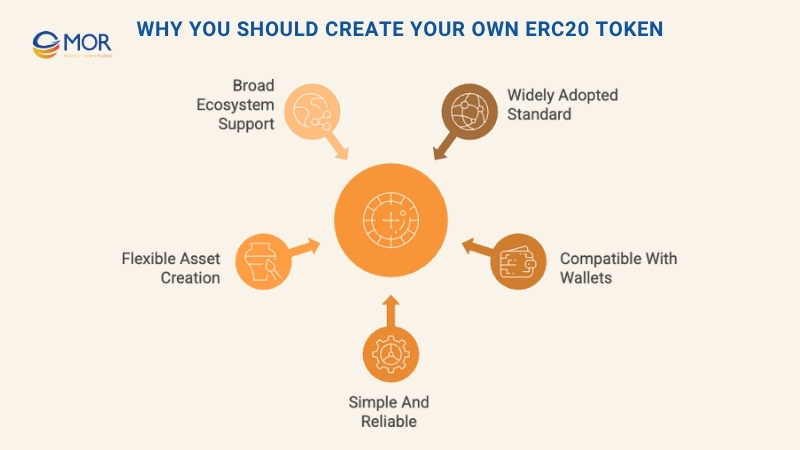
In this guide, you’ve learned how to create ERC20 token on Ethereum’s Goerli test network using Solidity, MetaMask, Hardhat, and Alchemy. When following these steps, you can quickly write and deploy your own token smart contract blockchain. The entire process takes about 15 minutes and gives you hands-on experience in creating an ERC20 token that works across the broader Ethereum ecosystem.
Top ERC20 Token Use Cases
Organizations adopt ERC20 tokens for a wide range of practical and strategic purposes. Some of the most common applications are:
- Asset tokenization: Consultants project real-world asset tokenization could reach around $16 trillion by 2030. This shows why businesses are exploring digital wrappers for property, commodities, and artwork to broaden access. Businesses can tokenize assets like property, commodities, or artwork, turning them into tradeable digital tokens that are easier for investors to access.
- Smart contract integration: Since ERC20 tokens run on Ethereum, they can work directly with smart contracts to automate processes in supply chains, governance, or digital marketplaces. On Ethereum alone, about $94B is currently locked in DeFi protocols, an at-a-glance indicator of how programmable tokens connect to automated financial logic.
- Customer loyalty and rewards: Companies can issue tokens as part of rewards programs to drive engagement, encourage repeat purchases, and build long-term customer retention.
- Fundraising and capital access: Through ICOs or STOs, startups and enterprises use ERC20 tokens as a fundraising consensus mechanisms, reaching global investors without relying on traditional intermediaries. At the previous cycle’s peak, $13.7 billion was raised in just the first five months of 2018, showing the global reach of token sales when conditions permit.
- Faster and cheaper transactions: Using ERC20 tokens can lower administrative costs and speed up transfers, cutting out the inefficiencies of traditional banking. For context, the global average cost to send $200 through traditional remittance channels is about 6.49%. By contrast, popular Ethereum Layer-2 networks often process simple token transfers for just a few cents.
- Building decentralized applications: Developers create ERC20 token systems to power dApps, whether for decentralized exchanges, governance platforms, or new financial ecosystems. In fact, over half of all DeFi developers, about 53%, work on Ethereum and its Layer 2 networks, which keeps ERC20 tokens at the core of most new projects.
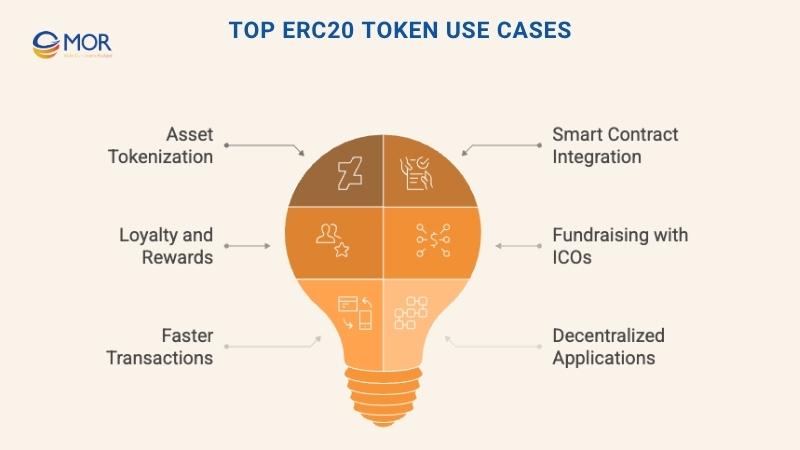
ERC20 tokens also serve as a kind of crypto generator, fueling different business models and empowering developers to launch programmable assets. While minting an ERC20 token is more accessible today thanks to modern tools, it still requires technical skill. Smart contract developer may write custom smart contracts, use platforms designed for ERC20 token create, or partner with blockchain experts to ensure everything runs securely and at scale.
Partner With MOR Software To Create ERC20 Token
MOR Software is recognized as one of Vietnam’s Top 10 ICT companies, a Sao Khue Award winner, and a trusted Vietnam software development outsourcing partner for global enterprises. With more than 850 successful projects across 10+ countries, we bring extensive experience in blockchain consuslting services, smart contracts, and especially services to create ERC20 token for different industries.
Our engineers are skilled in Solidity, Rust, and Python, working under Agile practices and ISO 9001 and ISO 27001 certified processes to guarantee both security and scalability. From designing the architecture, coding, auditing, and testing to deploying ERC20 tokens on Ethereum or other EVM-compatible chains, we cover the entire development cycle.
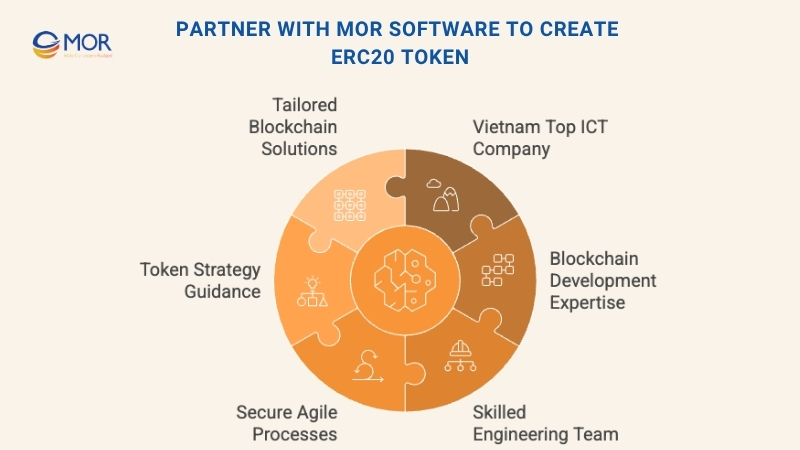
Beyond technical execution, we also advise on strategy, tokenomics, and long-term maintenance to keep your token stable and future-proof. Whether you aim to launch a DeFi platform, integrate blockchain into enterprise systems, or build a branded token for your community, MOR Software JSC delivers tailored solutions.
Ready to create ERC20 token for your business? Contact us today and get expert guidance from MOR Software’s blockchain specialists.
Best Practices When You Create ERC20 Token
Launching a secure and reliable token means paying attention to details and following proven guidelines. When you create ERC20 token, keep these practices in mind:
- Decimals matter: The decimals property, which defaults to 18, defines how balances are displayed. On-chain, amounts are stored in the smallest unit (for example, 1 token equals 1 × 10¹⁸ units). Interfaces then use this property to show readable values.
- Choose fixed or mintable supply: Decide early if your token should have a fixed total supply created at deployment or allow new tokens to be minted later. A fixed model is simpler, while a mintable one requires safeguards like admin control.
- Secure ownership and access: If minting or admin features exist, protect them. Transfer ownership to a multisig wallet or DAO for production use. OpenZeppelin’s Ownable contract is often used to manage permissions and reduce risks.
- Test thoroughly: Before going live, run extensive tests for every function, edge case, and interaction. Test on both local blockchains and testnets to catch errors before deployment.
- Verify contracts publicly: After deployment, verify your contract on Etherscan or a similar explorer. This gives users confidence, since they can review your code. Tools like Scaffold-ETH 2 make verification as simple as running yarn verify.
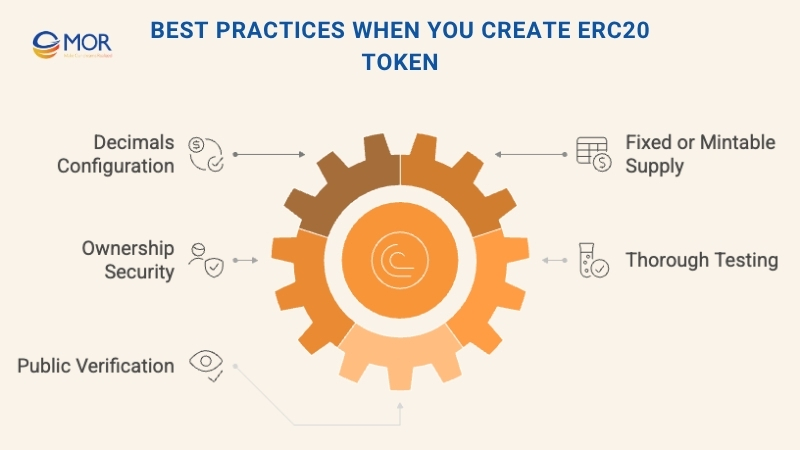
Before launching on mainnet, always validate your ether ERC20 contract across multiple environments to confirm compatibility with wallets, dApps, and exchanges. You’ll not only create an ERC20 token that works but also one that’s trusted, transparent, and secure by following these tips.
Conclusion
To create ERC20 token successfully, you need the right approach, from writing Solidity contracts to deploying on Ethereum. This guide has shown how each step works, making the process clear and achievable for businesses and developers alike. With MOR Software’s proven expertise in blockchain, smart contracts, and token development, you can turn your idea into a secure and scalable digital asset. Ready to get started? Contact MOR Software today and build your token with confidence.
MOR SOFTWARE
Frequently Asked Questions (FAQs)
What does it mean to create ERC20 token?
Creating an ERC20 token means building a fungible cryptocurrency on the Ethereum blockchain that follows the ERC-20 technical standard.
How long does it take to create ERC20 token?
Using tools like OpenZeppelin and HardHat, developers can build and deploy a basic ERC20 token in a few hours on a testnet.
Do I need coding skills to create ERC20 token?
Basic Solidity knowledge helps, but no-code platforms also exist. For professional-grade tokens, hiring blockchain developers is recommended.
How much does it cost to create ERC20 token?
The cost depends on complexity. A simple token on a testnet is free, but deploying on Ethereum mainnet requires paying gas fees, usually ranging from tens to hundreds of dollars.
What are the steps to create ERC20 token?
The process usually involves writing the smart contract in Solidity, testing it with HardHat, creating deployment scripts, and deploying it to Ethereum or a testnet.
Can I create ERC20 token without limits on supply?
Yes. You can set a fixed supply or make your contract mintable, allowing new tokens to be generated over time.
Is it safe to create ERC20 token?
Safety depends on proper coding and audits. Poorly written contracts can be exploited, so professional audits are recommended for real-world use.
What are the use cases if I create ERC20 token?
ERC20 tokens can be used for fundraising, payments, loyalty programs, governance, or as utility tokens in dApps and marketplaces.
Rate this article
0
over 5.0 based on 0 reviews
Your rating on this news:
Name
*Email
*Write your comment
*Send your comment
1